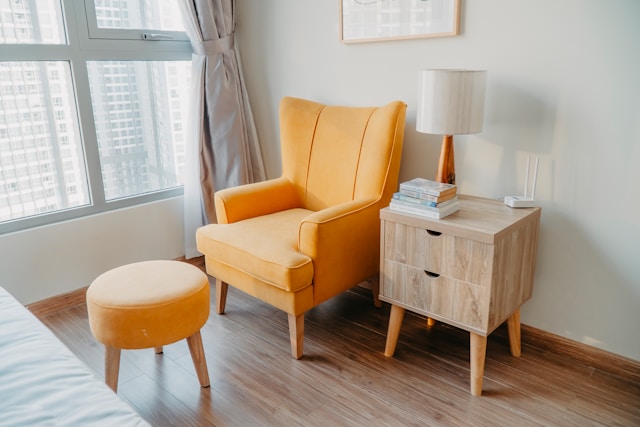Introduction
In today’s fast-paced world, the importance of ergonomics in furniture design cannot be overstated. Ergonomics, the science of designing products to optimize them for human use, plays a crucial role in creating furniture that enhances comfort, functionality, and well-being. This article explores how modern furniture design incorporates ergonomic principles to improve the user experience.
Understanding Ergonomics
Ergonomics involves the study of how people interact with their environment, particularly in the context of workspaces and everyday activities. The goal is to design furniture that supports the natural movements and postures of the human body, reducing the risk of discomfort and injury.
“Ergonomics is about fitting the product to the user, not the user to the product,” explains designer from 22bet.
Key Principles of Ergonomic Furniture Design
Adjustability: One of the core principles of ergonomic furniture is adjustability. Furniture that can be adjusted to fit the user’s body dimensions and preferences promotes better posture and reduces strain. For example, adjustable chairs with features such as seat height, backrest angle, and lumbar support allow users to customize their seating position for optimal comfort.
Support: Proper support is essential for maintaining good posture and preventing discomfort. Ergonomic furniture provides adequate support to different parts of the body, particularly the spine, neck, and lower back. Chairs with contoured backrests and seats that conform to the natural curve of the spine are examples of ergonomic design.
Mobility and Movement: Encouraging movement is another important aspect of ergonomic design. Furniture that allows for dynamic sitting and movement helps prevent stiffness and muscle fatigue. Swivel chairs, sit-stand desks, and rocking stools are designed to promote mobility and keep the body active.
Ease of Use: Ergonomic furniture should be easy to use and adjust. Simple mechanisms for adjusting height, angle, and other features ensure that users can quickly and effortlessly adapt the furniture to their needs.
Ergonomic Office Furniture
Office environments are a primary focus of ergonomic furniture design due to the significant amount of time people spend at work. Ergonomic office furniture aims to create a comfortable and productive workspace by reducing physical strain and promoting healthy postures.
Ergonomic Chairs: An ergonomic office chair is a staple of modern workspaces. Features such as adjustable seat height, backrest tilt, and armrests help users maintain a neutral posture. A good ergonomic chair provides lumbar support, reducing pressure on the lower back.
Sit-Stand Desks: Sit-stand desks are gaining popularity for their ability to promote movement and reduce the health risks associated with prolonged sitting. These desks allow users to alternate between sitting and standing positions, improving circulation and reducing the risk of musculoskeletal issues.
Keyboard Trays and Monitor Stands: Ergonomic accessories like keyboard trays and monitor stands help create an optimal workspace setup. Adjusting the height and angle of keyboards and monitors ensures that users can work comfortably without straining their neck, shoulders, or wrists.
Ergonomic Home Furniture
Ergonomic principles are also applied to home furniture to enhance comfort and well-being in everyday activities.
Ergonomic Sofas and Recliners: Sofas and recliners designed with ergonomics in mind provide better support for the back and neck. Features like adjustable headrests, reclining mechanisms, and contoured cushions help users relax in a comfortable and supportive position.
Ergonomic Mattresses and Pillows: Quality sleep is crucial for overall health, and ergonomic mattresses and pillows play a significant role in achieving it. Mattresses that offer proper spinal alignment and pillows that support the natural curve of the neck contribute to restful and rejuvenating sleep.
Kitchen and Dining Furniture: Ergonomic kitchen and dining furniture, such as chairs with proper back support and tables at the right height, can make meal preparation and dining more comfortable. Ergonomically designed stools and benches provide support during prolonged cooking sessions.
Benefits of Ergonomic Furniture
The benefits of ergonomic furniture extend beyond comfort, positively impacting health, productivity, and overall well-being.
Health Benefits: Ergonomic furniture helps prevent musculoskeletal disorders, reduces back and neck pain, and minimizes the risk of repetitive strain injuries. By supporting proper posture and movement, it promotes physical health and reduces discomfort.
Productivity and Performance: Comfortable and supportive furniture enhances focus and concentration, leading to increased productivity. In office settings, ergonomic furniture contributes to a healthier and more motivated workforce.
Long-Term Savings: Investing in ergonomic furniture can result in long-term savings by reducing healthcare costs associated with work-related injuries and discomfort. It also reduces absenteeism and improves employee retention.
Ergonomics plays a vital role in modern furniture design, emphasizing the importance of comfort, support, and functionality. By incorporating ergonomic principles, designers create furniture that enhances the user experience, promotes health, and improves productivity. Whether in the office or at home, ergonomic furniture is essential for creating spaces that are both functional and comfortable.
“Ergonomics is not just a design choice; it’s a necessity for enhancing the quality of life,” says furniture designer Michael Anderson. As awareness of the benefits of ergonomic design grows, the demand for ergonomic furniture continues to rise, shaping the future of modern living and workspaces.




